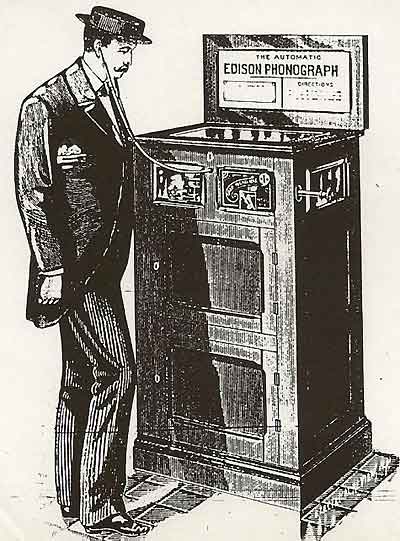Looking
for the Band

Edison's "Looking for
the Band" was an advertising campaign meant to convey the realism
of music by using the humor of a little boy who thought the source
of the band music must be inside the phonograph. It sounded so real.
Band music...but no band in sight?
The little boy ready
to chop open the phonograph to find the band was one way to promote
the phonograph's realism that Edison called "The Acme of Realism."
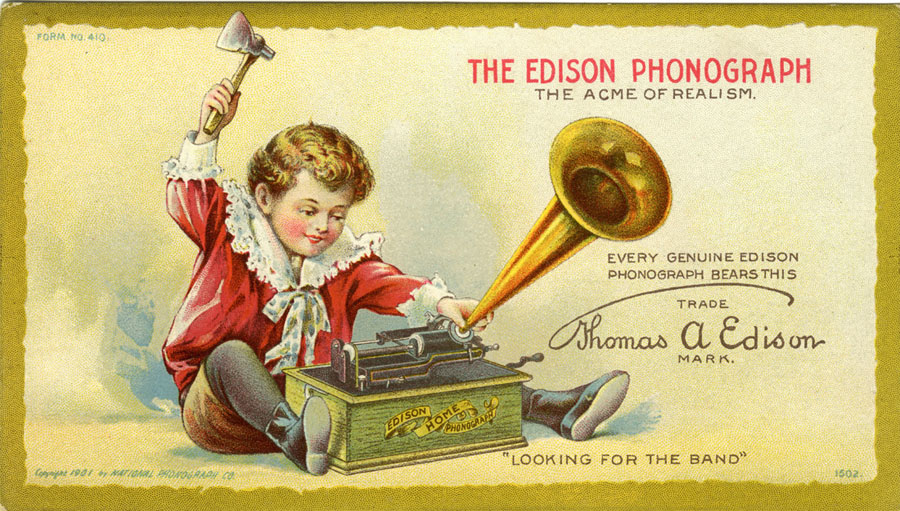
Edison Advertising
Form No. 410, c. 1901 (PM-0262)
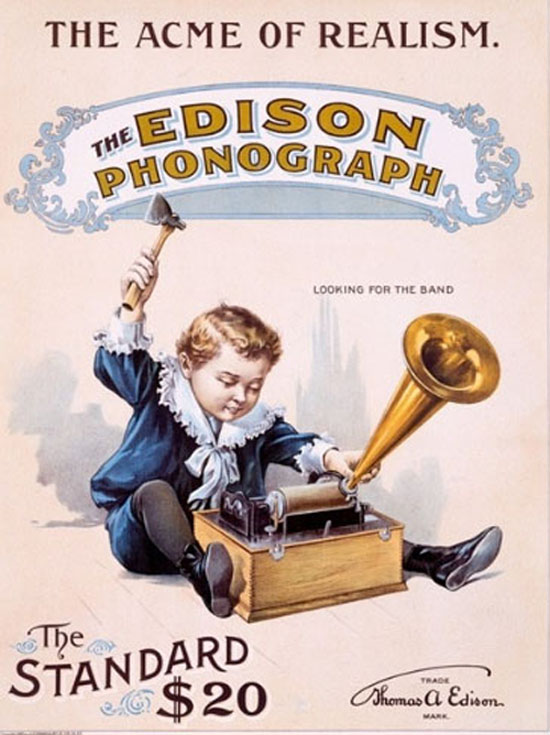
Edison Poster, Form
319, c. 1901 (PM-1348)
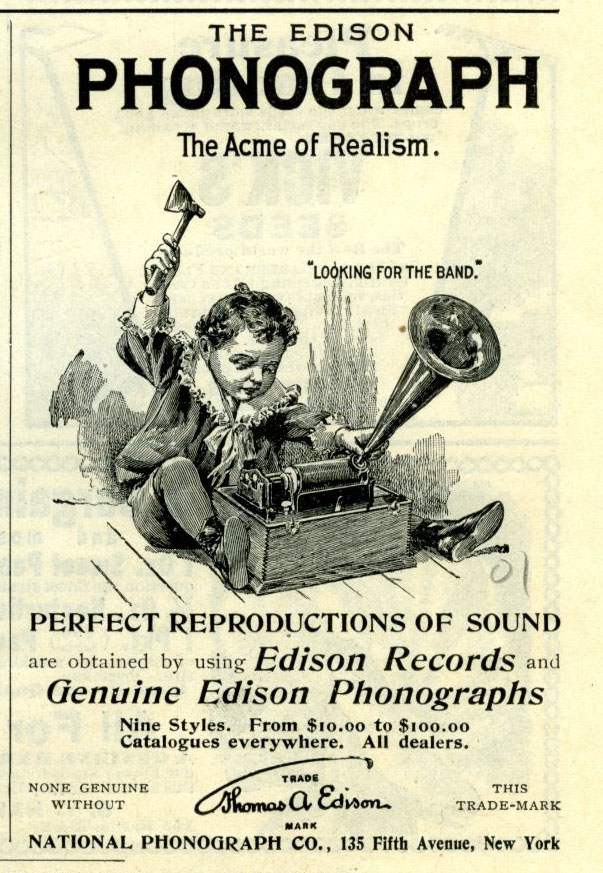
Quarter-page Pearson's
magazine ad, 1901 (PM-0940A)

This 1903 postcard series
of "Looking for the Band" images involves two sweet children who
are apparently listening to a phonograph and all is well. But then
their father leaves the room. (PM-0168)
The father returns to room and,
to his shock, the innocent children have taken apart the phonograph
"looking for the band." (PM-0167)
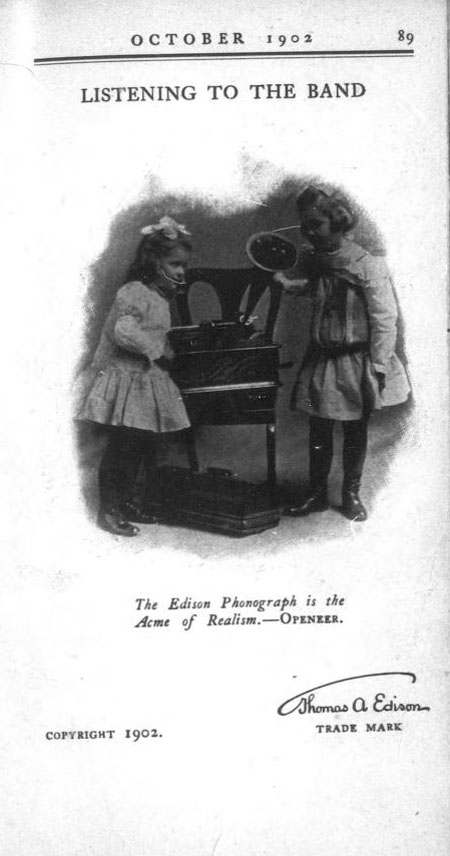 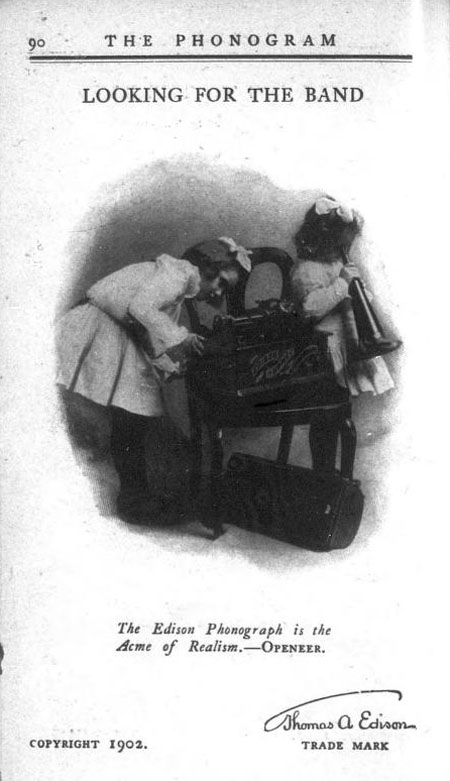
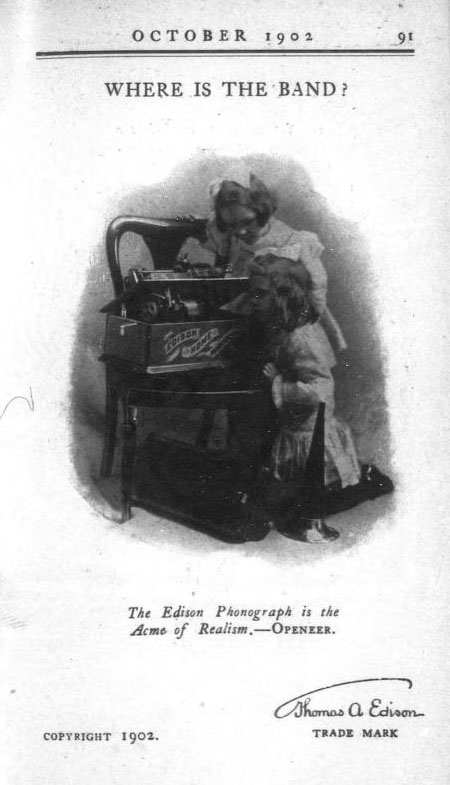
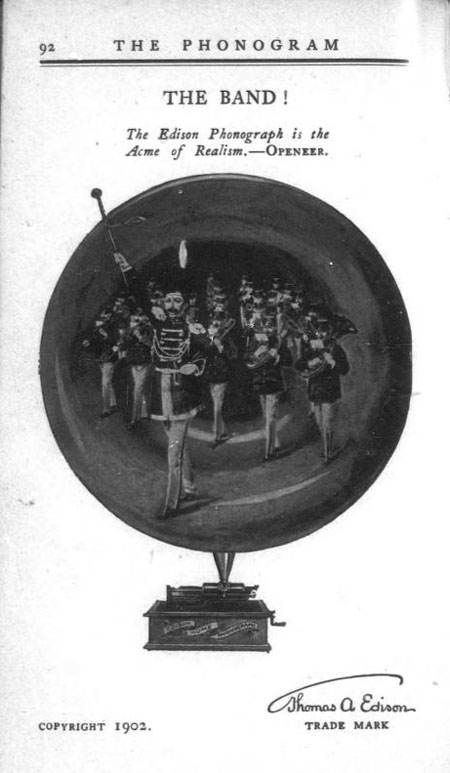
The Phonogram,
October 1902
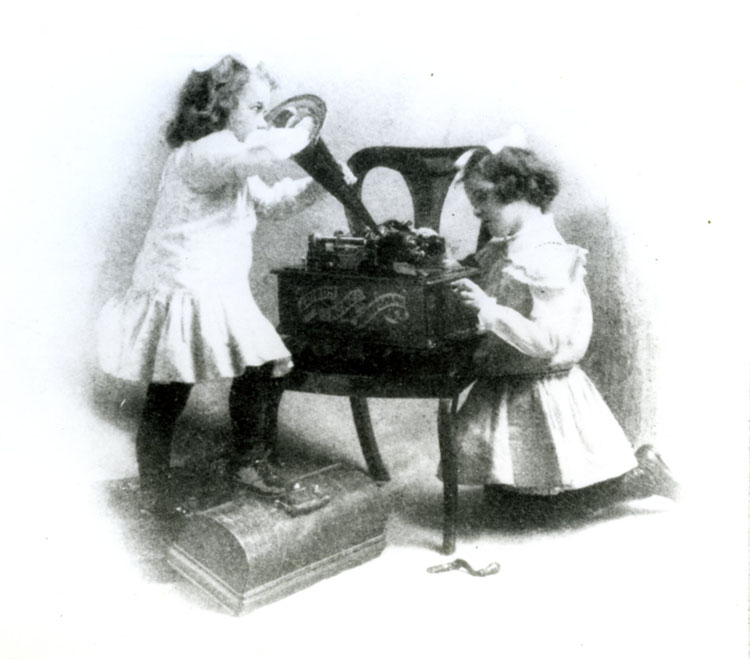
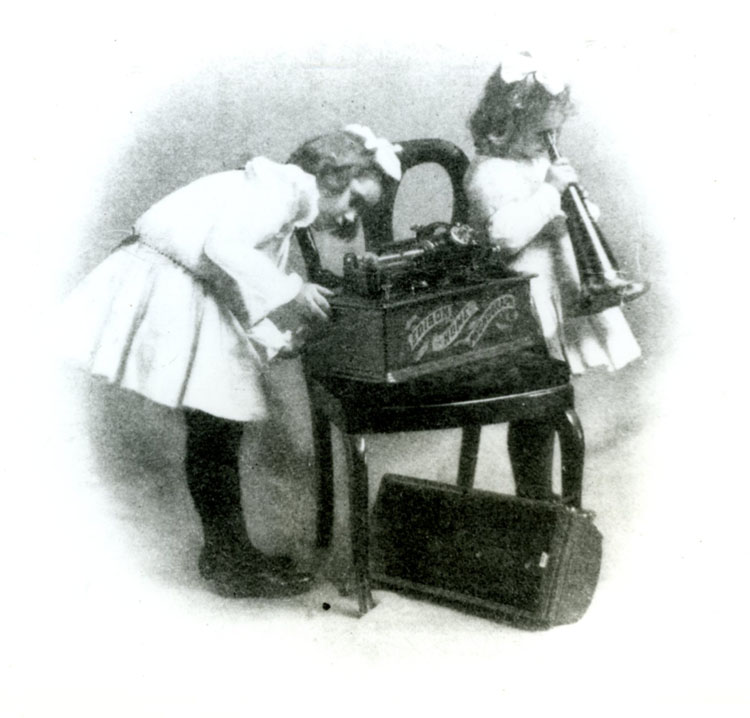
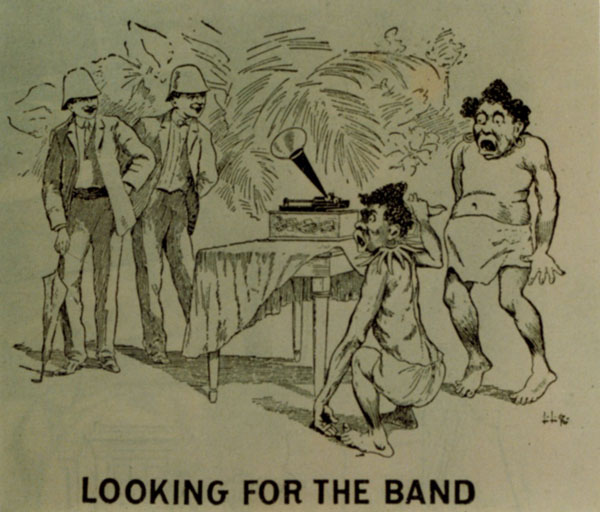
1903 Edison Dealer Electrotype
for newspaper advertising - Disclaimer
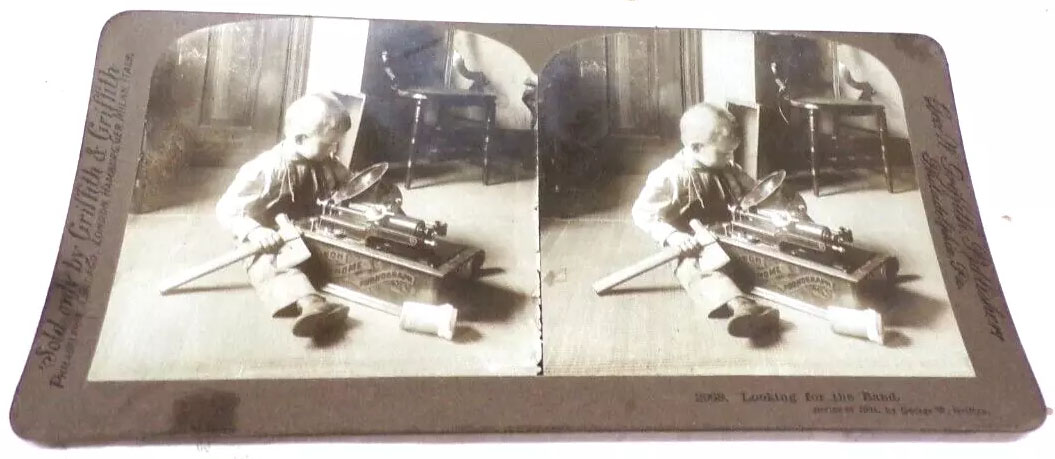
"Looking
for the Band," 1904 Stereoview card, George W. Griffith
Publisher, Philadelphia, PA.
The following is a 1906
Edison dealer hand-out titled "How the Boys Found the Band."
It was a fold-down advertising piece that showed curious boys climbing
over a wall to get a glimpse of the band they could hear, but not
see. When you opened the fold-out, the source was revealed: The
band music came from an Edison Triumph Phonograph (Model B introduced
in 1906).
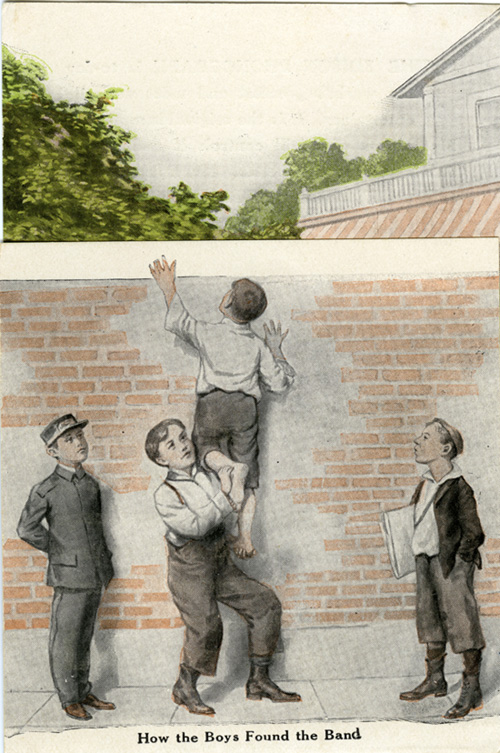
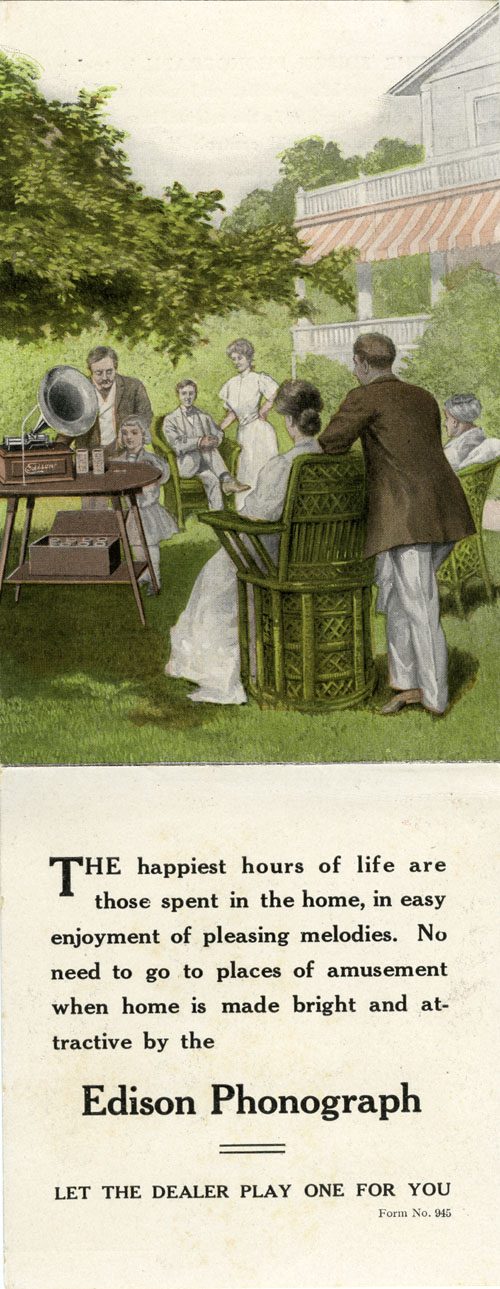
Edison fold-down advertising
Form No. 945 (PM-0201)
Edison Form No. 407 -
March, 1903 Trade card for Edison Gold Moulded Records
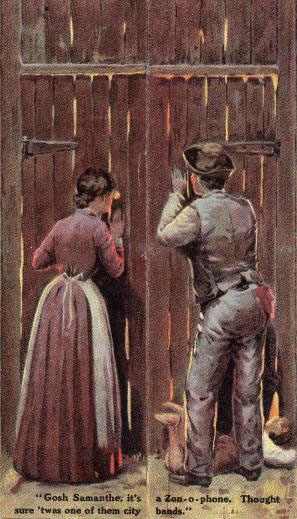
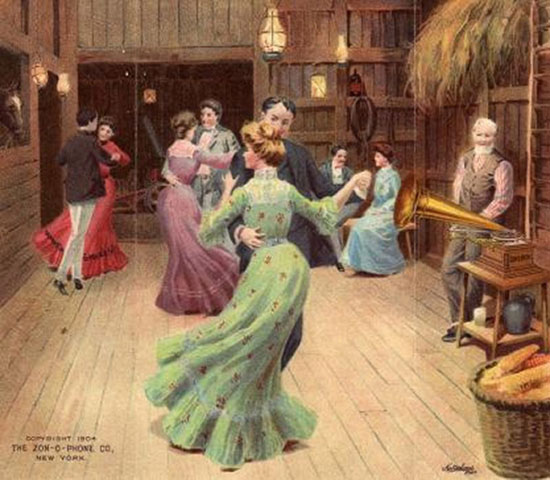
Zon-o-phone, 1904 (PM-2113)
Double-fold Zon-o-phone
advertising brochure: On the outside cover are two figures looking
through the barn door trying to see where the music is coming from
with the caption: "Gosh, Samantha, it's a Zon-o-phone. Thought
sure 'twas one of them city bands."
Open it up and inside
the barn it's confirmed that a Zon-o-phone is the source of the
dance music.
This 1912 postcard shows
a little girl searching for the source of the music:
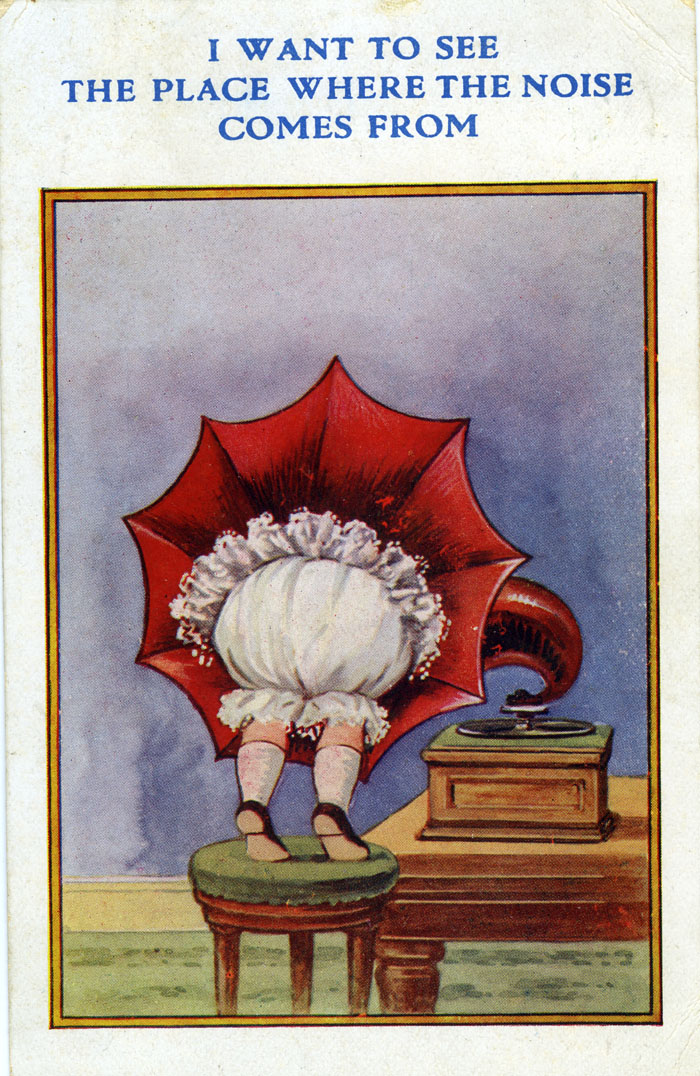
"I want to see..."
(PM-0438)
Another postcard, circa
1910, shows a little boy calling into the horn and asking if anyone
can see the "fellow who hollers."
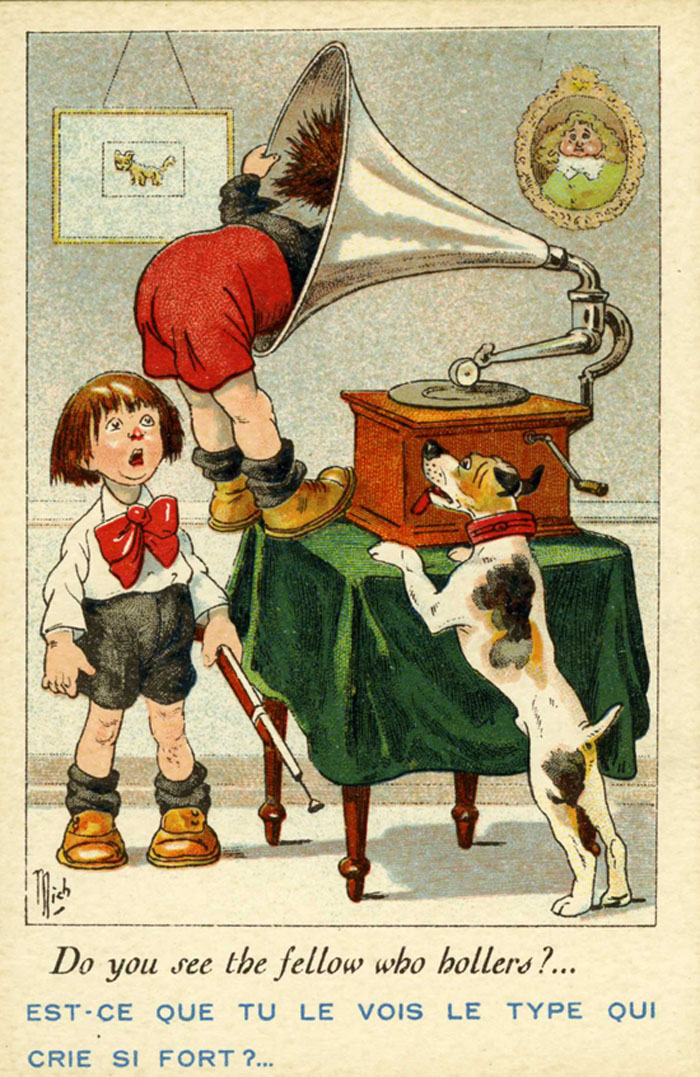
Circa 1910 postcard (PM-0228)
The next two postcards are each from
a series of postcards where an older child is explaining to a younger
child that music and voices come from the horns of these machines.
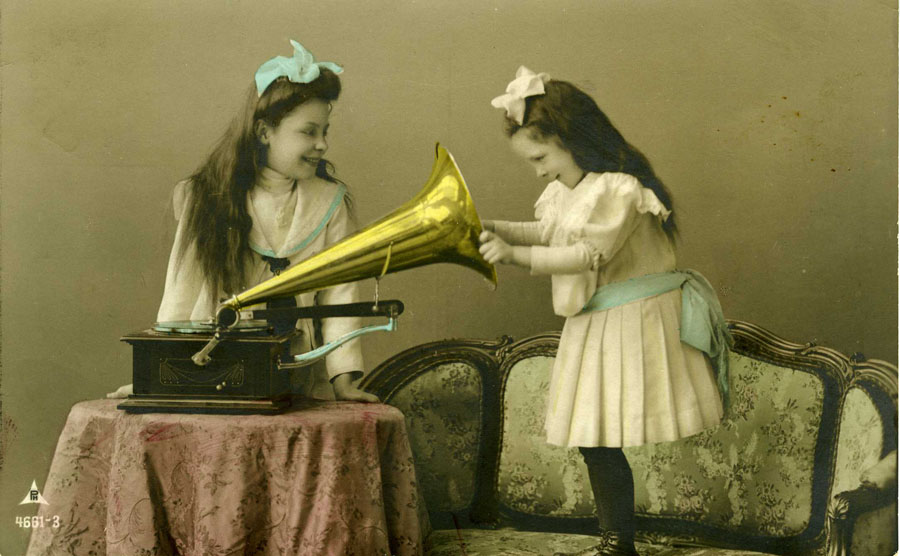 . .
c. 1908 postcard (PM-0597)
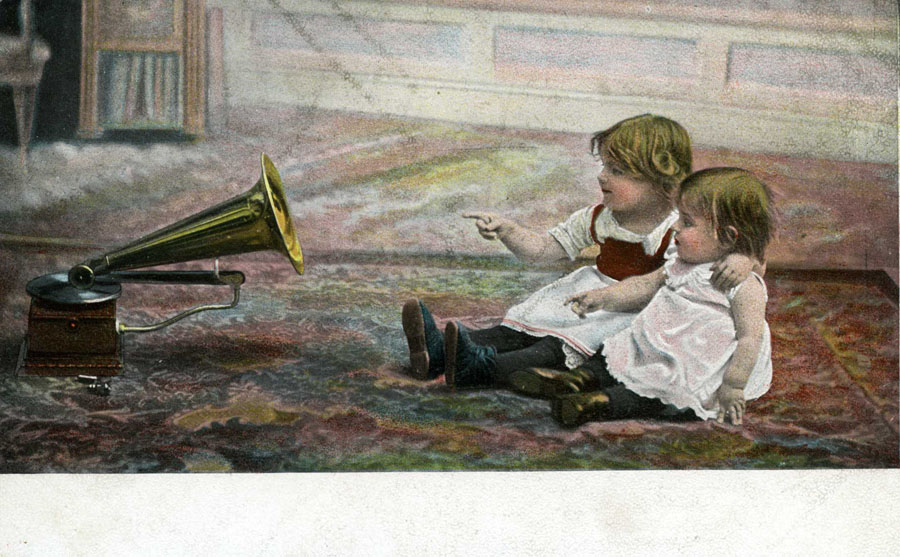
c. 1904 postcard (PM-0163)
Nickel-in-the
Slots and "Looking for the Band."
Introduction to a
Nickel-in-the-Slot
"What's that -- something to cure
ears?"
"No; I reckon it's a lung-tester."
"Look out, Sam! You will get a shock!"
"I'll bet it's some kind of a sell."
"Sell, is it? Sam shouts, with the
tubes in his ears. "You just hear this. It's a regular band playin'.
No sell about that. If that ain't worth a nickel of any man's
money, I'll pay for it.
" Everybody
laughed at Sam's enthusiasm expressed in such loud tones; but
at his recommendation even the most skeptical dropped his little
nickel in the slot and heard the phonograph.
"How do you load them, mister?"
"They don't load them. The music
comes over the Western Union wires" volunteered a wise by-stander,
in reply.
"No!"
"Yes, it does. Didn't you hear him
say that piece was played by the United States Marine Band of
Washington, D.C?"
Then they both peered around the
case to see where the wires came in."
The Phonogram, October 1891,
p 221
For more "Looking for the
Band" jokes see Phonographia's PhonoHumor
- "Looking for the Band"

The world's greatest
bands parade before you..." The National Geographic, 1917
(PM-0997)
THE PHONOGRAPH AND THE RUBE.
"Yes, sir," said Uncle Reuben,
as the Phonograph stopped, "that's mighty good -- mighty good!"
"Just wait awhile," said
the youth, as he slipped on another record, "and I'll explain
it to you."
"Oh, I understand it all right,"
responded Reuben."Understand
it all except one thing."
"What's that?" asked the
youth.
"Well," answered Reuben,
with an abashed grin, "I understand how these sleight-o'-hand
fellers pull big rabbits and pigeons out o' little hats, but I'll
be danged if I understand how you git a full brass band in that
box."
Indianapolis Sun
This 1921 Victrola
Christmas ad, December 1921, depicted
sound coming from the actual artists (in miniature) standing next
to the Victrola.
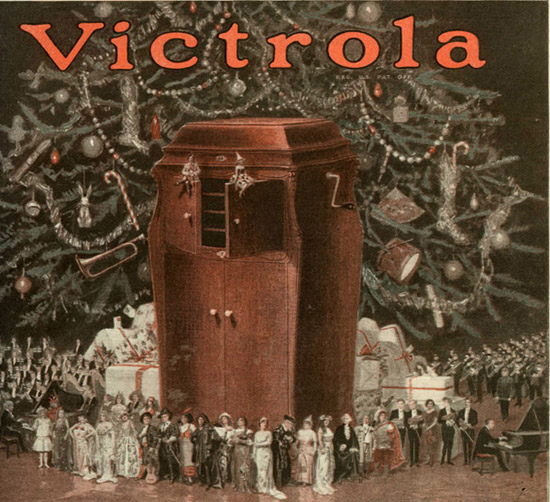
Victrola
Christmas ad, December 1921, The Delineator (PM-2029)
For examples of other
advertisements showing performers inside phonograph horns, coming
out of horns and coming out of "Victrolas," see Artists
Inside the Horn.
Promoting the realism of recorded sound
was a consistent theme of phonograph marketing through the decades.
The highest degree of realism and fidelity possible was the ultimate
goal for the phonograph and advertising to that effect would remain
true for all of the phonograph's descendent sound reproducing technologies.
The boy looking for the actual band
in 1900 and not believing that the music he heard was recorded sound
was repeated decades later with listeners of Memorex recording tape
being asked the advertiser's iconic question "Is it Live, or is it
Memorex?"

1974 Memorex ad - "Is
it live, or is it Memorex?"
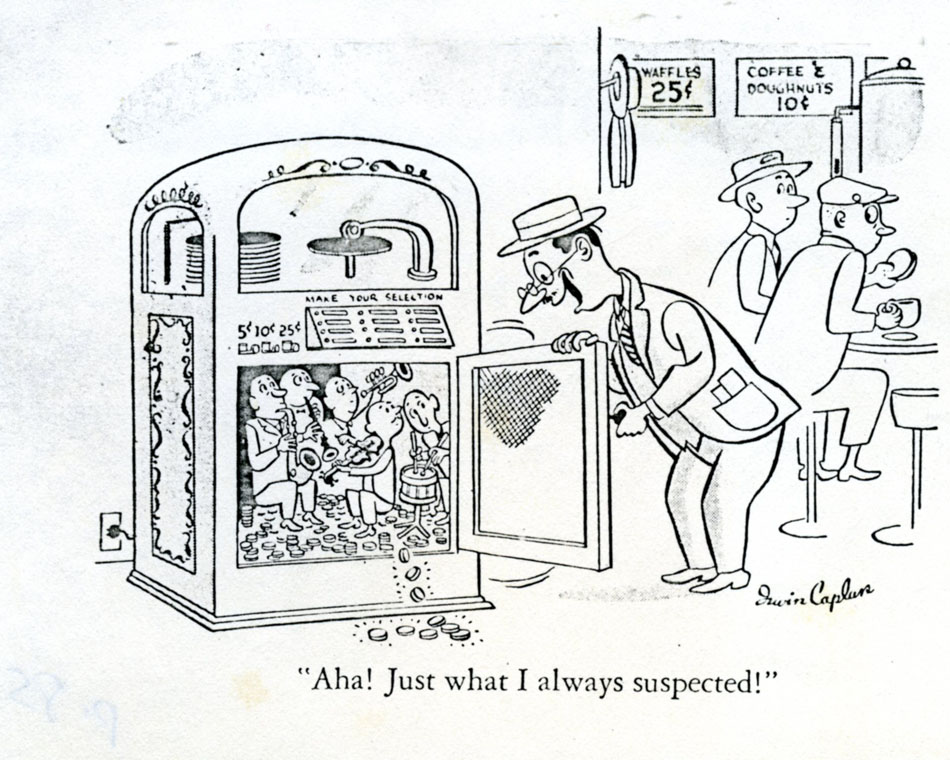
Irwin Caplan, ca. 1953
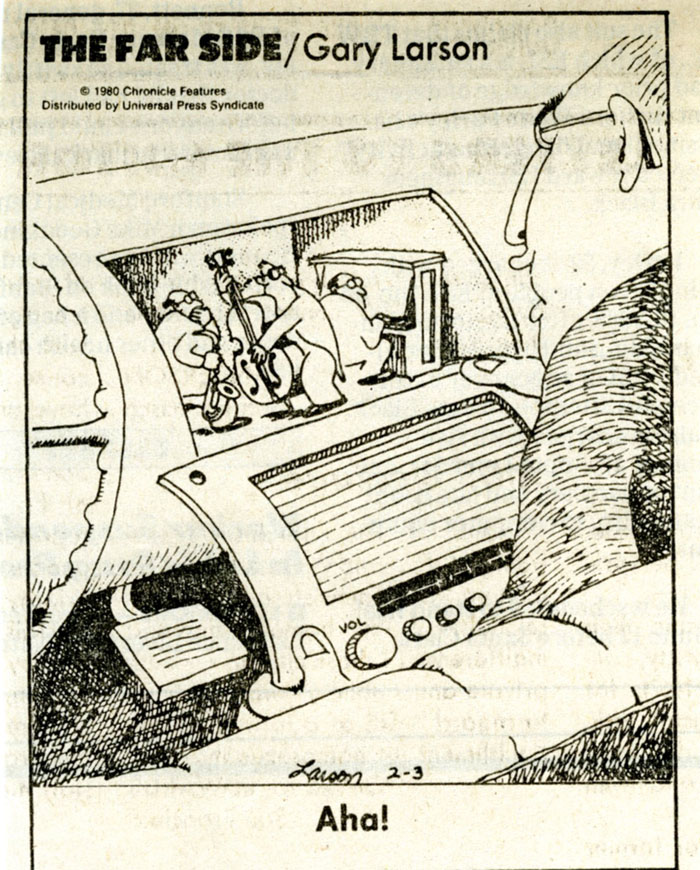
"Looking for the
Band in 1980" (courtesy Gary Larson)

Phonographia
|
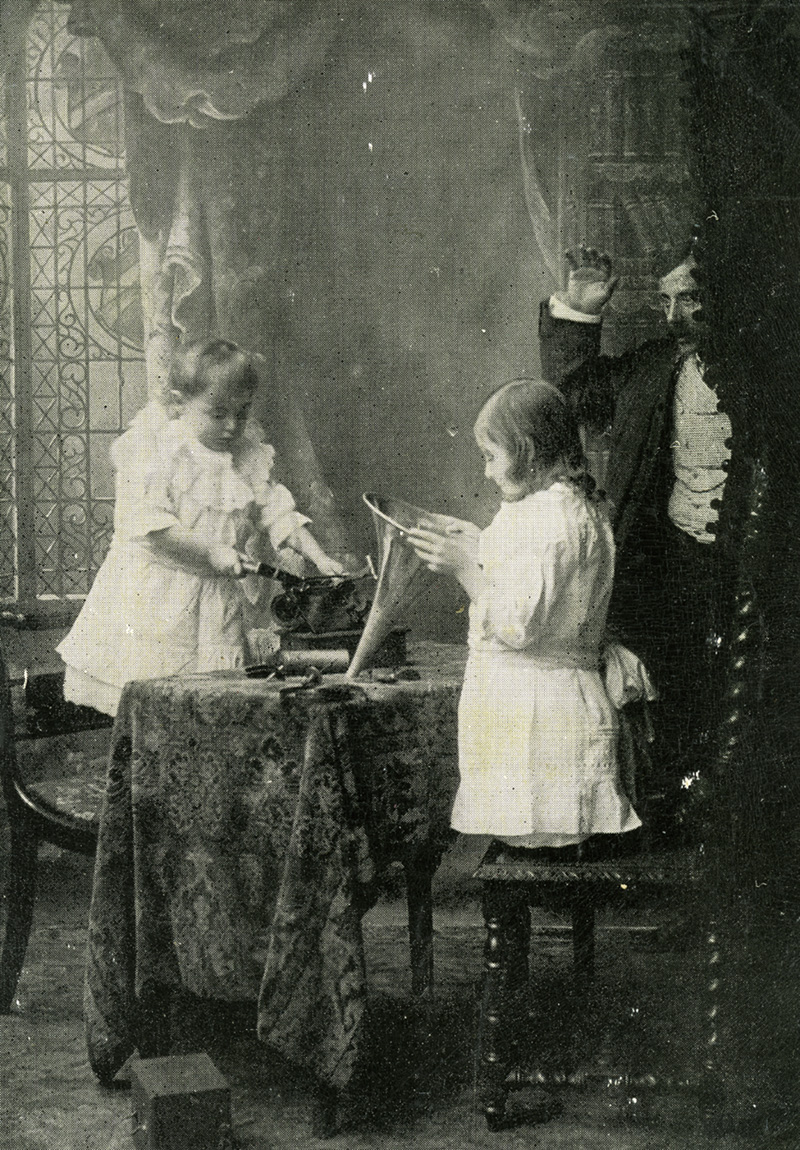
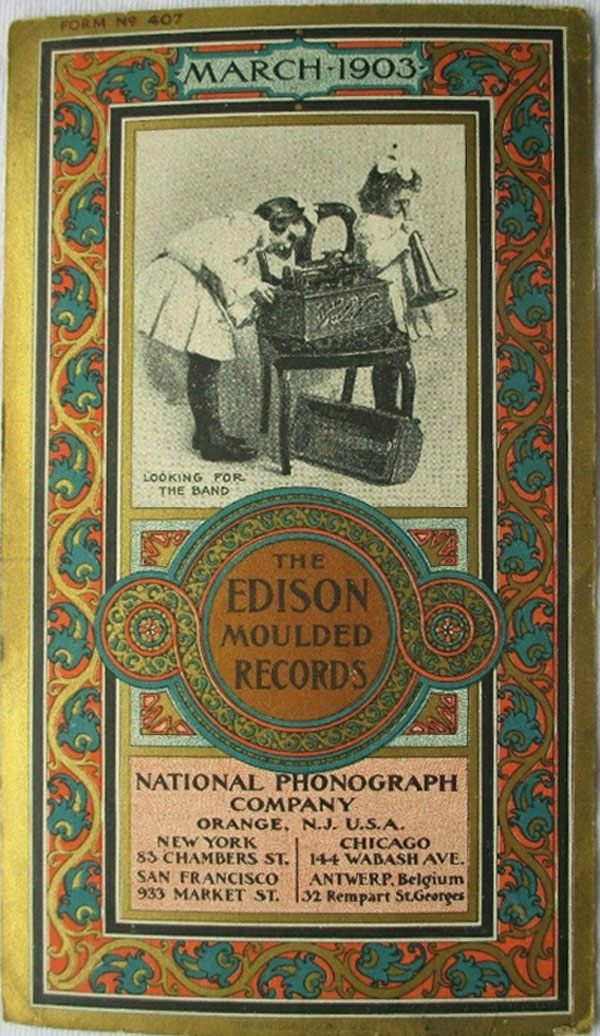



















 .
.
